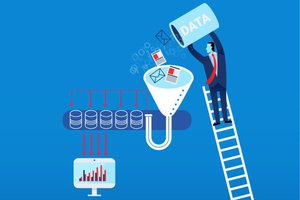Story
Electricity is the heart of modern social and economic development. More and more countries strive to transfer to sustainable energy systems, which is quite a challenging process, as it causes increasingly unstable power generation and grid overloads. The unstable electrical grid can endanger people’s lives and the safety of their property. This means that power systems should undergo timely monitoring and optimization, which AI and machine learning can easily handle.
In fact, artificial intelligence has become an essential tool in the power industry. It provides unique self-learning solutions for energy consumption analysis and grid monitoring under dynamically changing circumstances. In this project, we’ll explore how to leverage a machine learning model for efficient monitoring of the electrical grid as shown on the video.
Renewable Energy Sources & Smart Economy
The ascent of renewable energy sources provide the global community with a much demanded alternative to traditional, finite, and climate-unfriendly fossil fuels. However, their adoption poses a set of new paradigms, the two of which deserve particular attention:
- Prior to the rise of renewable energy sources, the traditional ecosystem involved few production entities (sources) supplying energy to consumers over unidirectional flows. With the advent of renewable options, end-users (households and enterprises) now not only consume energy but have the ability to produce and supply it. Also, for a reliable ecosystem, people need to ensure that energy grids are smarter and equipped with accurate detection of threats and faults.

- Despite the increased flexibility of renewable sources, the management of supply and demand in a more complex generation/distribution/consumption environment and the related economic implications (e.g. the decision to buy energy at a given price or not) have become even more challenging.
Need for Grid Stability
In a smart grid, consumer demand information is collected, and centrally evaluated against current supply conditions. The resulting proposed price information is sent back to customers for them to make decisions about further usage. As the whole process is time-dependent, dynamic estimation of grid stability becomes not only a concern but a major requirement.

Put simply, the objective is to understand and plan for both energy production and/or consumption disturbances and fluctuations introduced by system participants in a dynamic way, taking into consideration not only technical aspects but also how participants respond to changes in the associated economic aspects (energy costs).
The Challenges of Applying AI to Smart Electric Grids
- Insufficient data accumulation: there aren’t enough data samples that meet the requirements of diverse AI technology applications, and sample collection can be a time-consuming process.
- Reliability: although AI technology applied to power systems demonstrates high levels of problem identification, it doesn’t always meet the requirements of practical application.
- Infrastructure: applying AI is based on abundant data samples, advanced computing power, and distributed communication collaboration. However, the supporting capacity and level of relevant infrastructure resources such as quick production AI algorithms, and distributed collaboration platforms need improvement.
- Lack of power industry-specific algorithms: compared to perception, prediction, and security maintenance, algorithm adaptability of AI in power systems is still weak.
Solution
In this project, we will explore how we can predict electric grid stability with a free platform, Neuton TinyML, and an integrated IoT Platform-as-a-Service, Particle IoT that helps to deploy software applications to connected devices, from edge to cloud and back.
Also, we will explore the communication infrastructure for such electric grid operations. With the combined knowledge of AI and IoT, we will try to solve some parts...
Read more » alex.miller
alex.miller

 Jallson
Jallson
 Anteneh Gashaw
Anteneh Gashaw
 Sumit
Sumit